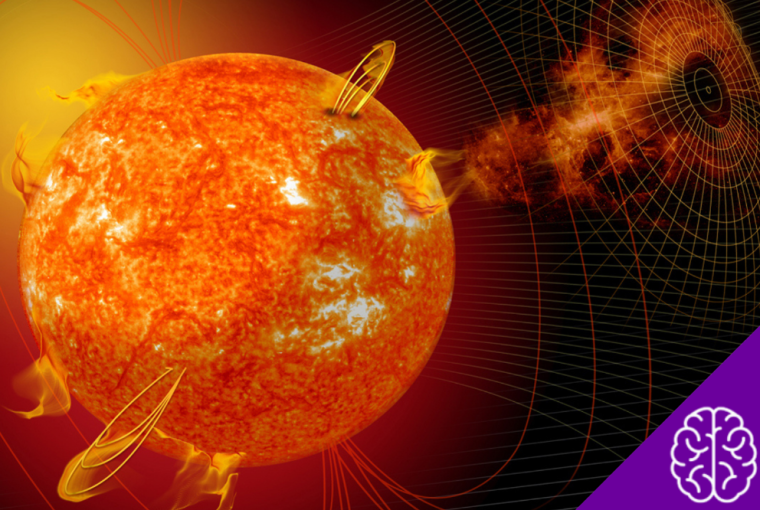When we think of the Sun, the first things that likely come to mind are its immense heat, dazzling light, and critical role in sustaining life on Earth. However, one curious question remains largely unasked by most people—is the Sun silent? Could something so energetic and powerful also produce sound, and if so, why can’t we hear it?
This article dives into this fascinating topic, exploring how the Sun generates sound, why space renders it mute, and how scientists have found creative ways to “listen” to our star.
Why Can’t We Hear the Sun?
It might seem strange to imagine the Sun as noisy. After all, from 93 million miles away, it beams down to Earth with an air of serene quiet. However, this silence is a side effect of the vacuum of space.
Sound is a form of energy transmitted through waves that require a medium like air, water, or solids to travel. To better understand, think of sound waves as a series of ripples spreading outward when you throw a stone into a pond.
Each ripple represents a transfer of sound energy. On Earth, the molecules in the air act as those ripples, allowing sound waves to travel from one point to another.
But space? Space is a vacuum, which means it lacks the molecules necessary to carry sound waves.
With no medium to travel through, the intense vibrations and “noise” created by the Sun remain trapped around it, unable to reach us here on Earth.
The Sound Phenomenon of the Sun
The Sun’s surface is an exceedingly active environment, filled with energy-producing phenomena like solar flares, coronal mass ejections, and turbulent plasma convection.
These activities generate immense vibrations, compressing and transferring energy. If these sound waves could cross space, they would likely reach an energetic roar that could deafen human ears.
Some estimates suggest the Sun’s “noise” might measure around 100 decibels (similar to a chainsaw or a rock concert). Rest assured, Earth’s atmosphere and the vacuum of space make this sound unhearable.
Giving a Voice to the Sun
Even though the Sun’s natural sound doesn’t reach us, scientists have devised ways to “listen” to it through innovative techniques.
Using a process called sonification, researchers convert data from the Sun’s movements and activities into audible sounds.
How Sonification Works
The Sun’s vibrations may not translate directly to sound waves, but they create measurable changes in its structure and activity.
Instruments like NASA’s Solar and Heliospheric Observatory (SOHO) and other solar observatories capture this data by monitoring oscillations on the Sun’s surface or changes in light patterns.
These vibrations are then translated into audible frequencies, creating artificial “Solar sounds.” This helps researchers analyze solar activity while showcasing the unseen (or unheard) natural phenomena in a more relatable format.
For example, scientists studying the Sun’s 11-year solar cycle (periods of sunspot activity) can use sonification to model the solar rhythms.
The resulting sound resembles a low, deep hum akin to a heartbeat, creating new ways to observe solar changes visually and audibly.
What Can Solar Sounds Teach Us?
Sonifying solar data isn’t just a scientific novelty; it provides valuable insights for researchers. Here are a few ways listening to the Sun helps:
- Spotting Patterns: Some variations in solar activity are hard to detect visually. Auditory patterns make subtle changes more apparent and easier to study.
- Education and Engagement: By making solar phenomena audible, sonification helps scientists engage the general public, offering a new perspective on how the Sun operates.
- Understanding Space Weather: Solar events like flares and coronal mass ejections can impact satellites, GPS signals, and power grids on Earth. Sonified solar data helps researchers better predict these disruptions.
Turning the Invisible Into the Audible Connection
Even though space itself creates an eerie silence, efforts like sonification have reconnected us with the Sun in innovative ways.
By making solar activity audible, scientists not only learn more about space’s mysteries but also spark a sense of wonder and connection to the star that illuminates our days.
The Sun may be quiet to our ears, but its activity is anything but. Thanks to advancements in technology, we can now explore and “hear” its secrets from a new perspective. Whether through data-driven sounds or visual patterns on satellite monitors, the Sun’s story continues to amaze and inspire us.
A New Way to Experience the Sun!
While you may not hear the Sun roaring when you step outside, its activity continues to shape our planet and our understanding of the Universe.
The silence we perceive is merely an illusion created by distance and space’s vacuum. Beyond that, the Sun vibrates, hums, and echoes, telling a story that science has just begun to unravel.
Curious about more captivating science or fun facts about space? Explore resources and stay connected with our future solar explorations!


